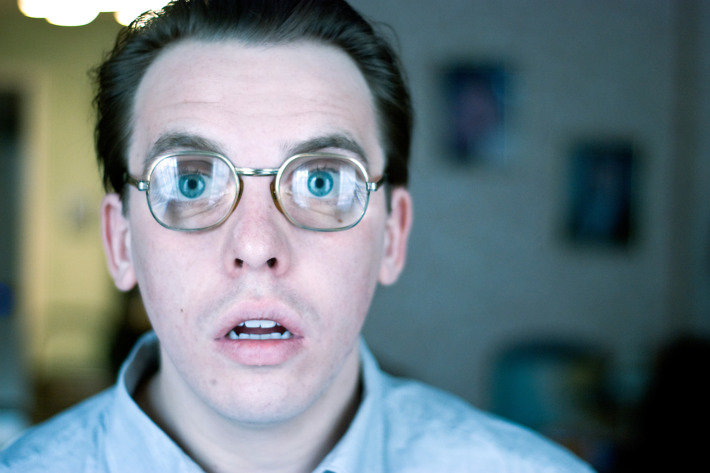
© Vitaliy Piltser/Getty Images
Ever have one of those moments where you suddenly feel your neck jerking backward, realize with a jolt that you can't remember the last few moments, and wonder in a panic whether you were daydreaming or fully unconscious?
The good news: If it was the latter, it was probably just for a few seconds. As neuroscientist Christof Koch, president of the Allen Institute for Brain Science, recently explained in
Scientific American,
an unstimulated brain can fall into microsleep, powering down into sleep mode for lightning-quick flashes before waking back up again.
"You're drowsy, your eyes get droopy, the eyelids close, your head repeatedly nods up and down and then snaps up: your consciousness lapses," Koch wrote. "These intervals can occur during any monotonous task, whether driving long distances across the country, listening to a speaker droning on or attending yet another never-ending departmental meeting." In one study, for instance, participants spent the better part of an hour doing mindless activities with a joystick and a screen; during that time, Koch reported, "participants had 79 microsleep episodes per hour, lasting between 1.1 and 6.3 seconds apiece."
Sleep, in other words, is sneakier than we give it credit for. We typically think of sleep as something segmented out into units that we can organize a day around: we have bedtimes and wake-up times, we take a nap to take a break. Even with a quick accidental snooze, looking back, you
know you were asleep. Microsleep, on the other hand, is often too fleeting to recognize.
But it gets even more complicated than those second-long naps. Slumber, Koch wrote, isn't a binary state.
You can be awake, or you can be asleep, or you can be somewhere in between. During the
first night in a new place, for example, part of the brain's left hemisphere remains active during deep sleep, possibly a protective state that keeps us on alert for new threats.
But the opposite is true, too:
Just as you can be partially awake while sleeping, animal research has shown that it's also possible to be partially sleeping while going about your day. In a
study published in
Nature in 2011, the study authors kept lab rats awake later than usual, mapping their brains' activity through those extra hours of wakefulness and the sleep that followed. During deep sleep, Koch explained, the brain experiences "discrete off periods, when nerve cells cease generating any electrical activity for 300 to 400 milliseconds" at a time. During those sleep-deprived hours, the rats' brains showed a strange pattern, with some going through that off period while others stayed on. In other words,
some neurons were sleeping even as other neurons — and the animal, for that matter — were awake.While the study on local sleep wasn't done on humans, it does build on an idea that microsleep research has raised: that the way we think we experience sleep may be pretty different from reality. The boundaries between sleep and wakefulness, it seems, are blurry, constantly shifting, and sometimes even nonexistent.

Reader Comments
to our Newsletter